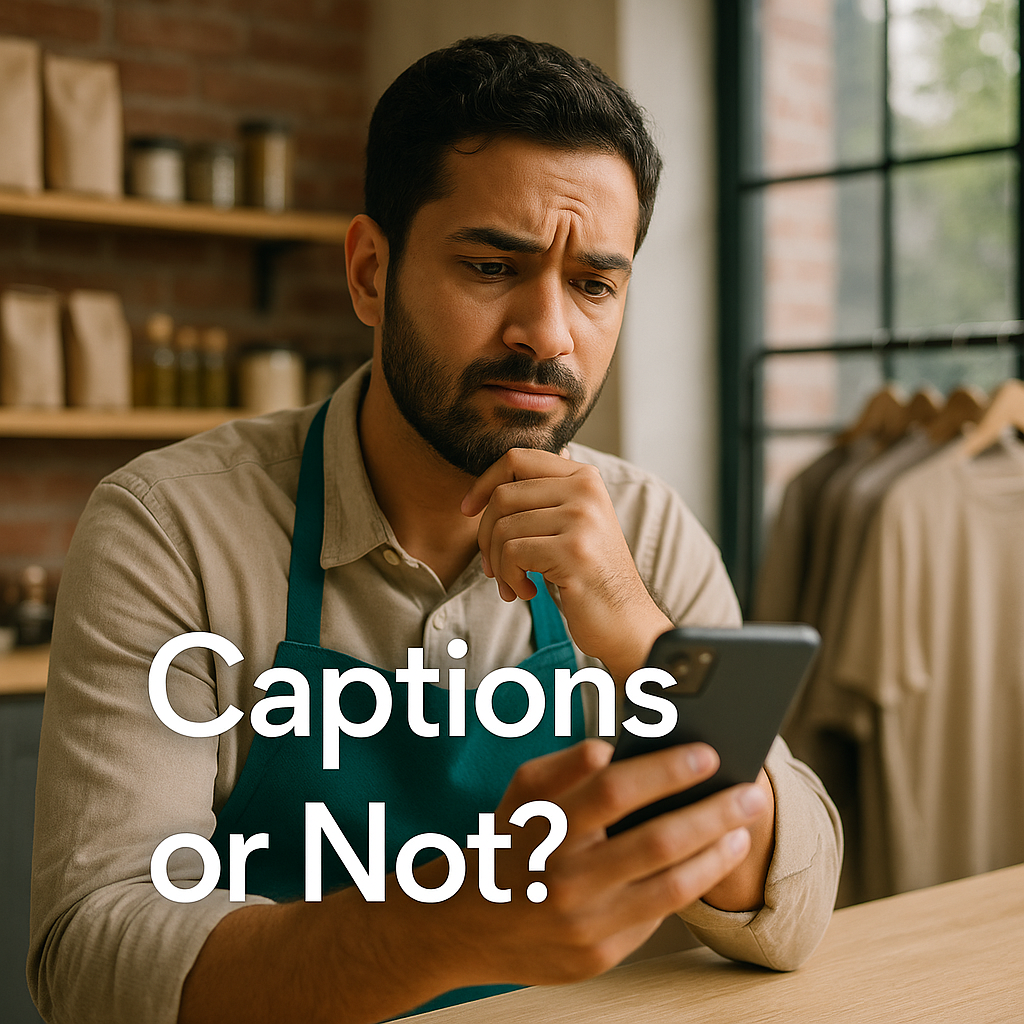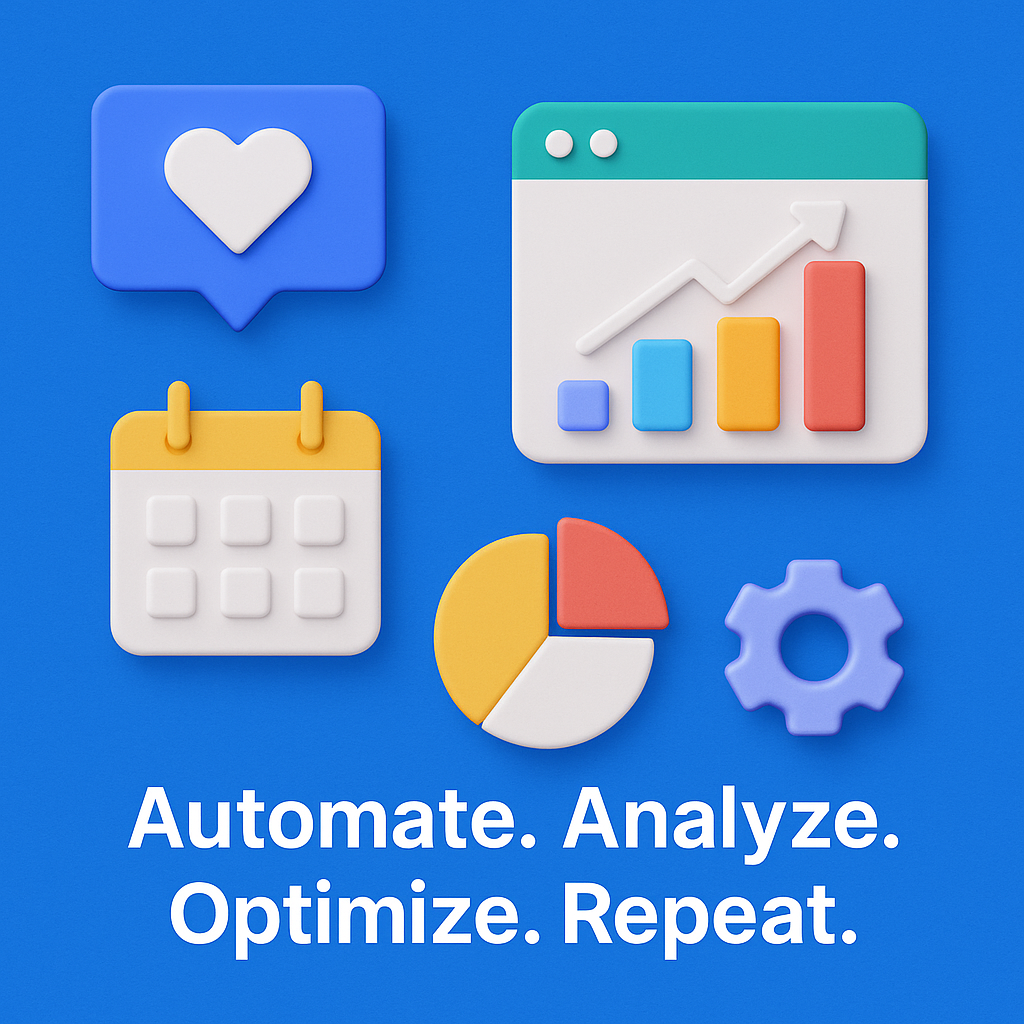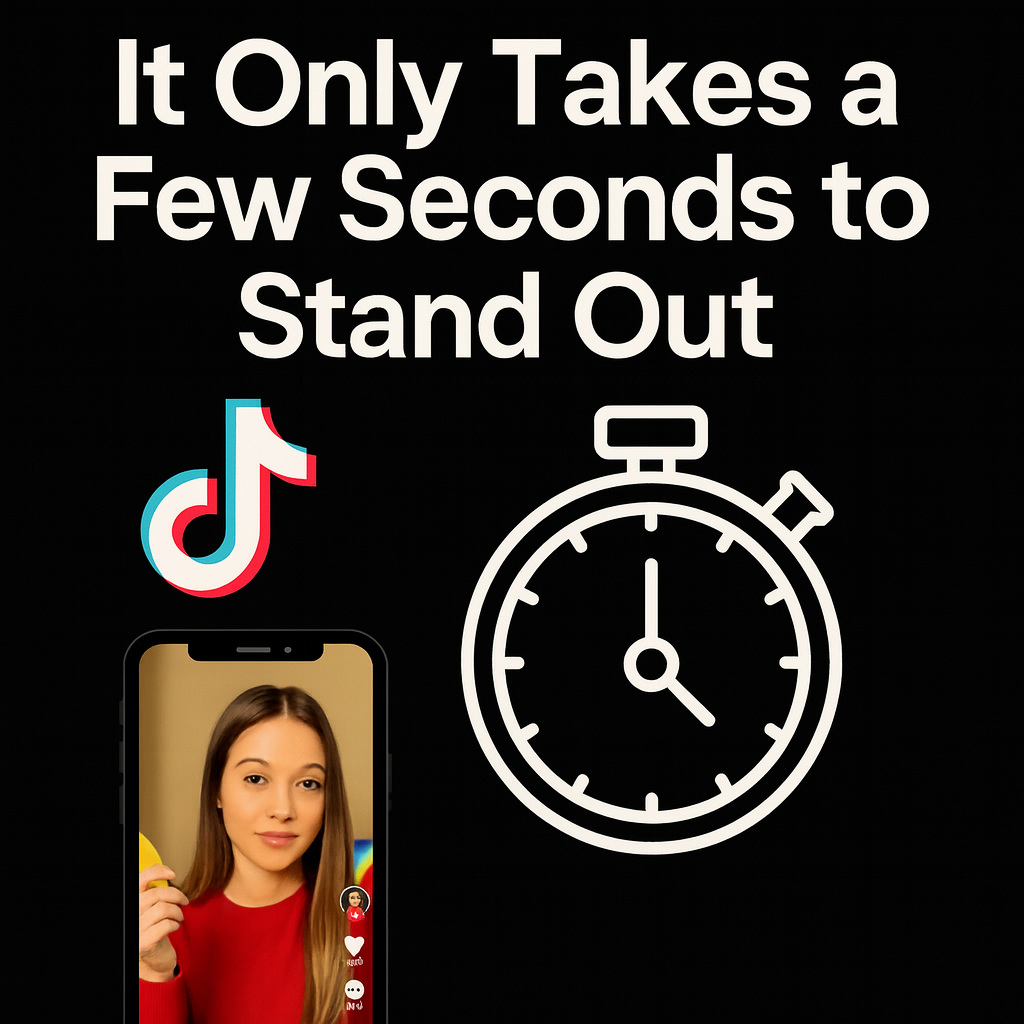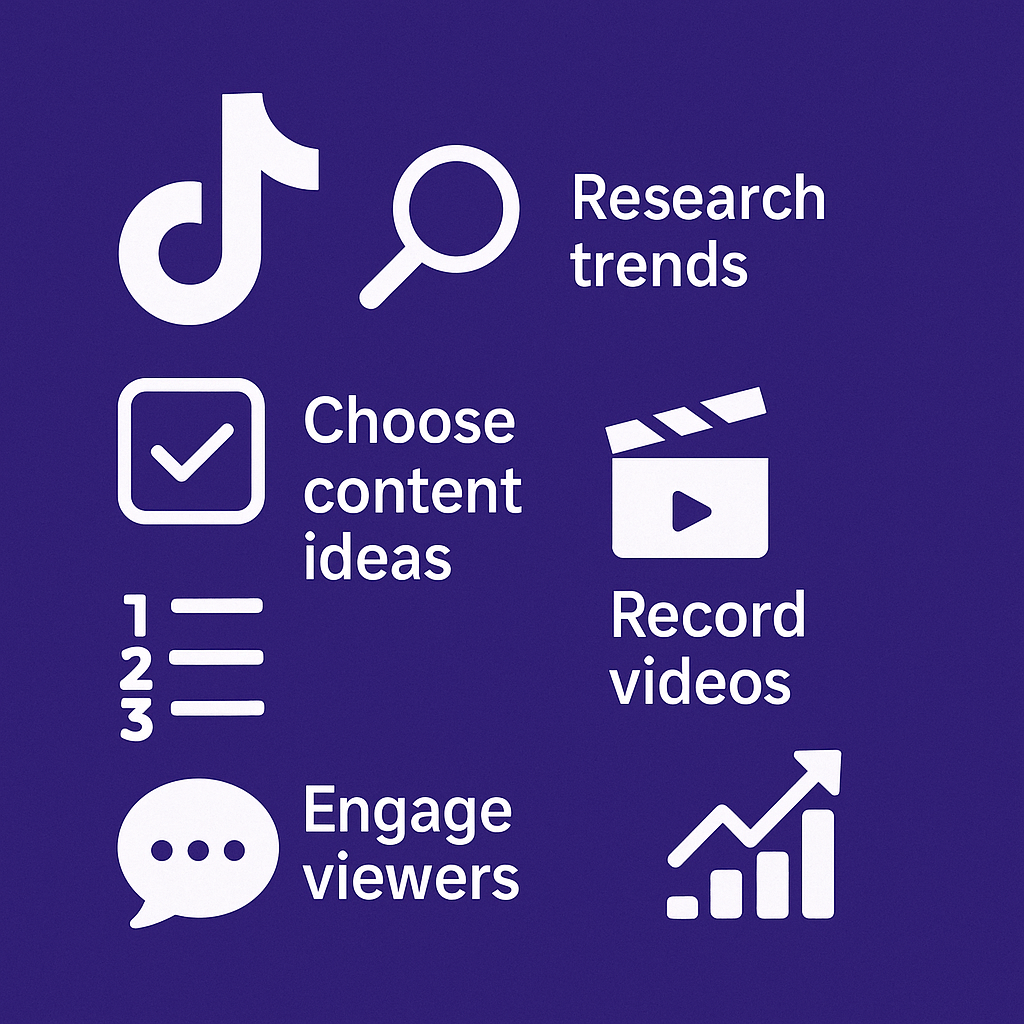You may have known the importance of an online presence for your business.
In today’s digital world, having a well-crafted website is crucial for reaching your target audience and growing your business.
At the heart of any successful website lies persuasive and engaging copywriting for websites.
Copywriting for websites starts with understanding your target audience’s needs, desires, and pain points. By crafting a message that speaks directly to them, you can create a strong emotional connection that motivates them to take action.
As a small business owner, you may have limited time and resources to make a significant impact. But if you use AIDA copywriting or the 4 Ps-Promise, Picture, Proof, and Push of copywriting for websites, you can create powerful content that captures your audience’s attention, builds trust, and ultimately drives conversions. This proven formula will help you communicate your unique value proposition, resonate with your target audience in marketing, and set your small business apart from the competition.
The journey to mastering copywriting for websites starts here!
In the following sections, we’ll explain each of the 4 Ps in more detail, providing valuable insights and actionable tips to help you craft compelling copy for your small business website.
By the end of this blog post, you’ll be well-equipped to apply these proven techniques to your website, transforming your content into a powerful tool that captivates your audience, showcases your expertise, and drives growth for your business.
So, let’s dive in and explore the world of the 4 Ps for copywriting for websites!
Table of Contents
The First P: Promise
A powerful promise sets the stage for effective copywriting for websites, enticing your audience to explore your content further.
Do you struggle with managing multiple social media platforms for your brand's presence?
The Sociosight app can help you simplify the process and save you time. With Sociosight, you can publish, schedule, and monitor posts and engage with your followers across multiple social media platforms, all from one dashboard.
Get started today with a free sign-up!
Register Now for Free

You can deliver your promise message through captivating headlines that focus on your value proposition!
Crafting Compelling Headlines and Hooks to Deliver Your Value Proposition
Crafting compelling headlines and hooks that deliver your value proposition is crucial to compelling copywriting for websites.
Your value proposition is the unique combination of benefits, features, and solutions your small business provides to your target audience. It forms the “Promise” part of the 4Ps copywriting for websites.
Using headlines and hooks, you can effectively communicate your value proposition and engage your readers’ emotions to draw them further into your content.

Headline
Your headline is the first line of text your readers encounter and should communicate your products or services’ main benefit or value.
For instance, in a small fashion business, a strong headline could be “Discover Your Unique Style with Our Handpicked Fashion Collection.” This headline delivers the business’s value proposition by emphasizing the unique and handpicked nature of the fashion collection.
Hook
Following the headline, you need a hook that captures your reader’s attention and creates curiosity to draw them further into your content.
In our fashion business example, a hook could be “Tired of the same old outfits? Let us help you reinvent your wardrobe with our expertly curated collection!” This hook addresses the target audience’s pain point of feeling stuck with their current wardrobe and introduces the solution offered by the business.
Integrating your value proposition into your headlines and hooks creates a cohesive and persuasive message that drives engagement and conversions.
To deliver on your promise, use clear and relatable language to communicate how your products or services can solve specific problems or address needs.
Use emotional appeals that resonate with your audience, such as addressing their pain points or desires. For instance, in our fashion business example, you could say, “Get ready to turn heads and feel confident in your unique style with our handpicked fashion pieces.”
Example of Headlines and Hooks to Deliver the Promise in the 4Ps Copywriting for Website
Let’s take a look at the following example of headlines and hooks to deliver the promise in the 4Ps copywriting for websites across various small business industries:
Example 1: A Fitness Studio
Headline: Get Fit and Feel Great with Our Expert Fitness Classes.
Hook: Are you tired of going to the gym and not seeing results? Our certified trainers will create a personalized workout plan that fits your goals and lifestyle, so you can get the results you’ve been looking for.
Example 2: A Digital Marketing Agency
Headline: Boost Your Business Growth with Our Comprehensive Digital Marketing Services.
Hook: Is your online presence not generating the leads you need? Our team of experts will create a custom digital marketing plan that increases your website traffic and conversions, so you can grow your business and reach your goals.
Example 3: A Pet Grooming Service
Headline: Give Your Furry Friend the Royal Treatment with Our Premium Pet Grooming Services.
Hook: Are you tired of mediocre pet grooming services that leave your furry friend uncomfortable and unhappy? Our experienced groomers will provide the best care for your pet, using only the highest quality products and techniques to make them look and feel their best.
Restaurant Industry
Headline: Savor the Flavors of Authentic Italian Cuisine at Our Restaurant.
Hook: From homemade pasta to wood-fired pizza, our dishes are made from the freshest and highest quality ingredients to transport you to the streets of Italy. Book your table now and experience the authentic taste of Italy!
E-commerce Industry
Headline: Elevate Your Home Office with Our Stylish and Affordable Furniture.
Hook: Working from home can be challenging, but our chic and functional furniture collection will make it a breeze. We have everything you need, from ergonomic chairs to spacious desks, to create a comfortable and productive workspace. Browse our collection today and start working in style!
Healthcare Industry
Headline: Feel Confident and Healthy with Our Expert Medical Services
Hook: Your health and well-being are our top priority. Our team of experienced medical professionals is here to provide personalized and compassionate care that puts your mind at ease. Book your appointment today and take the first step towards a healthier and happier you!
Beauty Industry
Headline: Unleash Your Inner Beauty with Our Natural and Sustainable Products.
Hook: Our beauty products are made with only the best natural and sustainable ingredients, so you can feel good about what you put on your skin. From nourishing creams to vibrant makeup, our collection will help you embrace your unique beauty. Shop now and radiate confidence!
These examples demonstrate how to use headlines and hooks to deliver the promise in the 4Ps copywriting for websites across various small business industries.
By crafting a solid headline that delivers the value proposition of your small business and following it up with a hook that addresses your target audience’s pain points or desires, you can effectively communicate your promise and create a connection with your readers.
The Second P: Picture
The second P in the 4Ps copywriting for websites is “Picture,” which refers to painting a vivid image in your reader’s mind.
Storytelling and emotional appeal are promising approaches to help you picture your products or services. With this technique, you can create a powerful connection with your readers that engages their senses and emotions and motivates them to act.
Descriptive Language to Create a Powerful Picture
To create a powerful picture in your copywriting for websites, use descriptive language that engages your readers’ imagination and emotions.
For instance, in our small fashion business example, you could use descriptive language to paint a picture of how wearing fashionable pieces can make customers feel confident and stylish.
Use words that evoke specific images or emotions, such as “luxe,” “sophisticated,” or “bold,” to create a sense of identity and aspiration for your target audience.
Storytelling for a Powerful Picture in Copywriting for Websites
Another way to create a picture in your copywriting for a website is to use storytelling.
By sharing a story showcasing the benefits of your products or services, you can create a relatable and memorable emotional connection with your readers.
For instance, in our healthcare industry example, you could share a story of how one of your patients overcame a health issue with the help of your medical services. This will create a sense of trust and empathy with your target audience and encourage them to choose your services over competitors.
Emotional Appeal for a Powerful Picture in Copywriting for Websites
Lastly, using emotional appeal is also crucial in creating a powerful picture in your copywriting for the website. By tapping into your readers’ emotions, you can develop a sense of urgency or desire that motivates them to take action.
For instance, in our beauty industry example, you could use an emotional appeal by emphasizing how natural and sustainable beauty products can make you look good and feel good about your impact on the environment.
In summary, the second P of the 4Ps copywriting formula, “Picture,” is about creating a powerful image in your reader’s mind using storytelling, descriptive language, and emotional appeal.
Examples To Create a Picture in Copywriting for Websites
Here are some examples that demonstrate how to use storytelling and descriptive language to create a picture in your copywriting for websites:
Technology Industry
Imagine (storytelling) having the latest technology at your fingertips that seamlessly integrates into your workday.
Our cutting-edge software (descriptive language) will revolutionize the way you work and make your job more accessible than ever before. Say goodbye to manual processes and hello to increased productivity and efficiency (emotional appeal).
Beauty Industry
Picture (storytelling) yourself with glowing, flawless skin that radiates health and beauty. Our all-natural skincare line (descriptive language) is made with the highest quality ingredients to achieve desired results without harsh chemicals. Join the thousands of satisfied customers who have reached their best glowing skin. (Emotional appeal).
Fitness Industry
Imagine (storytelling) pushing yourself to the limit in a supportive and encouraging environment. Our fitness studio offers a variety of classes (descriptive language) that cater to all fitness levels, so you can challenge yourself and achieve your goals. Join our community of fitness enthusiasts and discover what you’re capable of (emotional appeal).
Food and Beverage Industry
Picture (storytelling) yourself savoring our artisanal chocolates’ rich and indulgent flavors. Our chocolatiers use only the finest ingredients (descriptive language) to craft delectable treats that satisfy your cravings and delight your senses. Give in to your sweet tooth and indulge in our irresistible creations (emotional appeal).
Education Industry
Imagine (storytelling) your child excelling in a safe and nurturing environment. Our school has dedicated and experienced educators (descriptive language) who deliver a curriculum that promotes critical thinking and creativity. We strive to cultivate a love for learning (emotional appeal) and give our students the tools they need to succeed.
In each of these examples, descriptive language and storytelling are used to create a vivid image in the reader’s mind. By painting a picture of the product or service’s benefits, the reader can visualize how it will positively impact their life. The emotional appeal also creates a sense of desire and urgency to take action.
The Third P: Proof
As a small business owner, you know that establishing credibility and trust is essential for your online success.
One powerful way to do this is by incorporating the third P, Proof, into your copywriting for websites. Social proof, like testimonials, case studies, and social media engagement, can go a long way in convincing potential customers that you are the real deal.
Testimonials
Testimonials are a classic form of social proof and a tried-and-true method for improving copywriting for websites.
By including positive reviews and experiences from satisfied customers, you demonstrate to potential clients that your products or services have worked for others like them.
Be sure to include the customer’s name, photo, and relevant details about their experience with your business.
For example, if you run a local bakery, sharing a testimonial from a customer who loved your custom-designed cake for their child’s birthday party can help others imagine the delight your baked goods could bring to their celebrations.
Case Studies
Case studies are another way to showcase proof in your copywriting for websites.
You create a compelling narrative that potential clients can relate to by sharing detailed examples of how your business has helped other customers achieve their goals.
For instance, if you offer social media management services, you could feature a case study of a small business that saw a significant increase in its online following after working with you. Be sure to highlight the specific strategies you employed and the measurable results that followed.
Other forms of Social Proof
Lastly, leveraging other forms of social proof, like social media engagement, can further enhance your copywriting for websites.
Sharing your business’s social media success, such as the number of followers, likes, and shares, can help convince potential clients that you have a robust and supportive community backing your products or services.
You could also showcase user-generated content, like photos or videos of customers using your products, to further demonstrate your brand’s popularity and trustworthiness.
An Example of Incorporating the Proof Part in Copywriting for Websites
Look at the following example of how social proof in copywriting for websites can be used in the fitness industry.
“Our fitness studio has helped thousands of people like you achieve their fitness goals. Don’t just take our word for it – check out our testimonials page to see what our satisfied customers have to say. Our customers have seen amazing results, from weight loss success stories to increased strength and endurance. Plus, we have a 4.9-star rating on Yelp and over 10,000 followers on Instagram, so you can trust that we know what we’re doing when it comes to fitness.”
In this example, the fitness studio uses testimonials and social proof to establish its credibility and show potential customers they have a proven track record of delivering results. By providing evidence of their success, they build trust and increase the likelihood that potential customers will choose to do business with them.
The Fourth P: Push
Crafting powerful calls-to-action (CTAs) is crucial in copywriting for websites to push your visitors to convert into customers.
A call-to-action is a clear and compelling message that prompts the reader to take a particular action, such as purchasing, filling out a contact form, or subscribing to a newsletter.
Here are some examples of how you can use CTAs to encourage engagement and increase conversions:
Button Copy
The text on your buttons can make a big difference in encouraging clicks. Use action-oriented language that creates a sense of urgency, such as “Buy Now” or “Sign Up Today.” Be clear about what will happen when the button clicks so the user knows exactly what to expect.
Placement
The placement of your CTAs is also vital. Make them prominent and visible, and use contrasting colors to stand out. Place CTAs strategically throughout your website, such as on product pages or in your blog’s sidebar.
Incentives
Offering incentives can be a powerful way to encourage engagement and increase conversions. Consider offering a discount code, free shipping, or a free trial period to entice potential customers to take action.
Here’s an example of how CTAs in your copywriting for websites can be used in the e-commerce industry:
“Ready to take your style to the next level? Shop our collection of on-trend fashion now and get 20% off your first purchase when you sign up for our newsletter. Don’t miss out on the latest styles and exclusive offers – subscribe today and start shopping!”
In this example, the e-commerce website uses a CTA to encourage website visitors to make a purchase and sign up for their newsletter.
By offering a discount incentive, they create a sense of urgency and encourage users to act. The CTA is prominently placed on the homepage and uses action-oriented language to encourage clicks.
By crafting a clear and compelling CTA, the website increases the likelihood that visitors will convert into customers.
Balancing the 4 Ps for Optimal Results
While the 4 Ps are essential for compelling copywriting for websites, it’s important to adapt them to different website types and audiences.
Tips for Balancing the 4Ps in Copywriting for Websites
Here are some tips for balancing the 4 Ps in your copywriting for websites to achieve optimal results:
Understand Your Audience
Different audiences will respond differently to your 4 Ps copywriting for websites.
Ensure you understand your target audience and their needs, desires, and pain points. You can create a customer persona to segment your target audience as per their characteristic similarity. This will help you craft copywriting for websites that speaks directly to them and encourages them to take action.
Adapt to Different Website Types
The 4 Ps can be applied to any website. However, the way you balance them may vary depending on the type of website you have. For example, a B2B may emphasize the Promise and Proof Ps more, while an e-commerce may focus more on the Picture and Push Ps in their copywriting for websites.
Experiment with Different Combinations
While the 4 Ps are a tried-and-true formula, feel free to experiment with combinations to find what works best for your website and audience. Try adjusting the balance of the Ps and see how it affects engagement and conversions.
An example of how the 4 Ps can be adapted for a B2B website.
“At XYZ Consulting, we understand that your business is unique, and that’s why we offer tailored solutions that address your specific pain points and help you achieve your goals. With over 10 years of experience and a proven track record of success, we have the expertise and knowledge to deliver results. Contact us today to learn how we can help your business grow.”
In this example, the B2B website focuses on the Promise and Proof of the 4 Ps. They emphasize their tailored solutions and expertise. They use language to target business owners and decision-makers looking for a trusted partner to help them achieve their goals. By adopting the 4 Ps to the needs and desires of their audience, the website is more likely to engage and convert potential customers.
Here’s an example of how the 4 Ps can be adapted for a B2C website.
“Welcome to Sarah’s Bakery, where we bake with love and passion. Our delicious, made-from-scratch treats are sure to satisfy your sweet tooth. Whether you’re looking for a special occasion cake or a mid-afternoon snack, we’ve got you covered. With glowing reviews from our satisfied customers and a commitment to using only the finest ingredients, you can trust that you’re getting the best. Visit us today and treat yourself!”
In this example, the B2C website focuses on the Picture and Push Ps by vividly portraying their delicious treats and encouraging customers to visit their bakery. The language targets individuals who love baked goods and seek a high-quality, indulgent treat.
The website establishes trust and credibility with potential customers by showcasing social proof in the form of customer reviews and a commitment to quality ingredients.
By adopting the 4 Ps to the needs and desires of their audience, the website is more likely to engage and convert potential customers.
Real-life Examples of the 4 Ps in Action
Analyzing successful websites can provide valuable insights into effectively using the 4 Ps of copywriting for website success.
Here are some real-life examples of successful websites and their copywriting techniques:
Airbnb
Airbnd starts its copywriting by promising to help travelers “belong anywhere” by offering unique and affordable accommodations in cities worldwide.
The website uses storytelling and descriptive language to create a picture of the travel experience while establishing proof through customer reviews and ratings. Calls-to-action as a push are strategically placed throughout the website, encouraging visitors to book their next trip or become hosts.
Nike
Nike’s website uses storytelling and emotional appeal to create a picture of the ideal athlete, promising performance and excellence.
The website also establishes proof through customer reviews and athlete endorsements, showcasing the effectiveness of its products. Calls-to-action as a push is prominently placed throughout the website, encouraging visitors to purchase or sign up for their email list.
Apple
Apple’s website uses storytelling and emotional appeal to create a picture of innovation and cutting-edge technology, promising high quality and user experience.
The website also establishes proof through customer reviews and product ratings, showcasing the effectiveness and reliability of its products. Calls-to-action (push) are strategically placed throughout the website, encouraging visitors to purchase or learn more about their products and services.
Dropbox
Dropbox’s website uses customer case studies and testimonials to prove its product effectiveness and customer satisfaction.
The website also promises to make collaboration and file sharing easy and efficient while using descriptive language and emotional appeal to create a picture of productivity and success.
Calls-to-action (push) are strategically placed throughout the website, encouraging visitors to sign up for their free trial or to contact their sales team.
Tools and Resources for Refining your Copywriting Skills
Now that we have discussed the 4 Ps of copywriting for websites and provided examples and real-life case studies, refining your copywriting skills is crucial to ensure your website copy is engaging, effective, and optimized for your target audience.
Fortunately, several tools can help you with audience research, competitor analysis, generating copy ideas, analyzing the strength of your headlines, proofreading your copy, and promoting your website copywriting on social media.
Tools for Audience Research
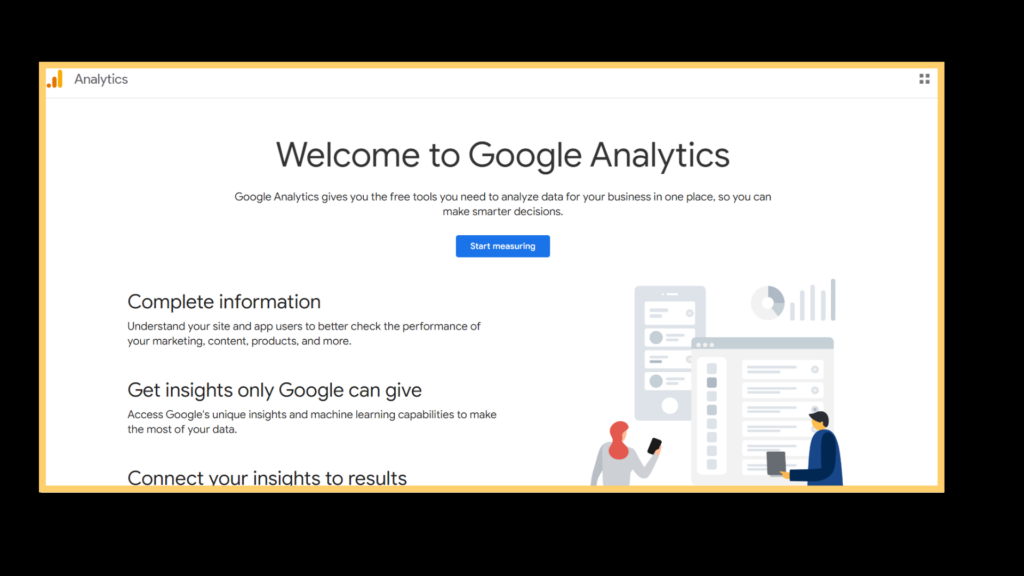
Google Analytics is a free tool that helps you analyze your website traffic and demographics.
At the same time, social media insights (such as Facebook Insights or Twitter Analytics) can provide valuable information on your followers and their interests. Survey tools like SurveyMonkey or Typeform can also help you gather feedback and insights from your audience, such as their preferences or pain points.
Tools for Competitor Research
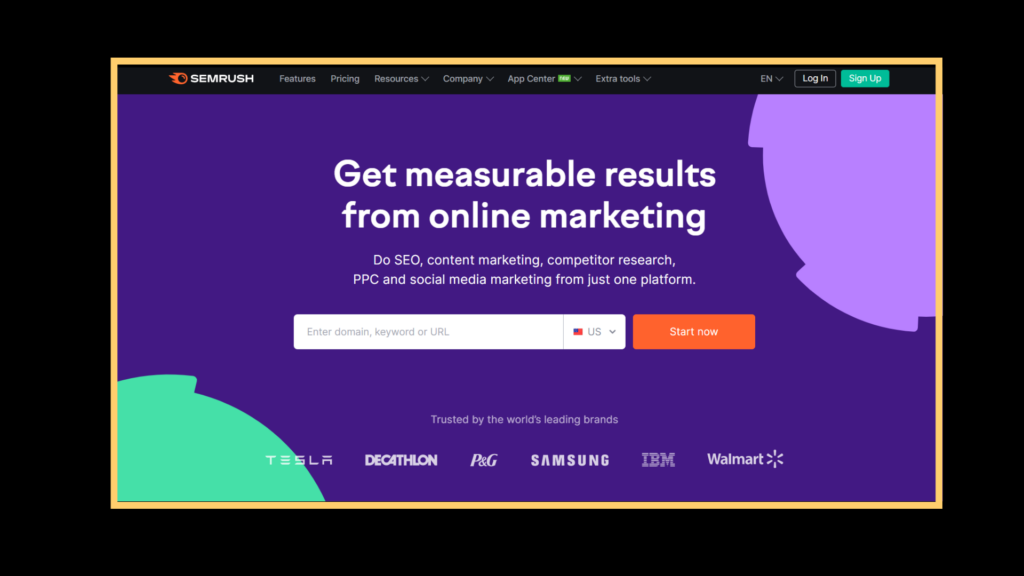
SEMrush or Ahrefs can help you analyze your competitors’ website traffic and keywords, while tools like Buzzsumo can help you identify popular content and social media trends. These tools can help you identify opportunities to differentiate your copywriting for your website and provide value to your target audience.
Tools for Generating Copy Ideas
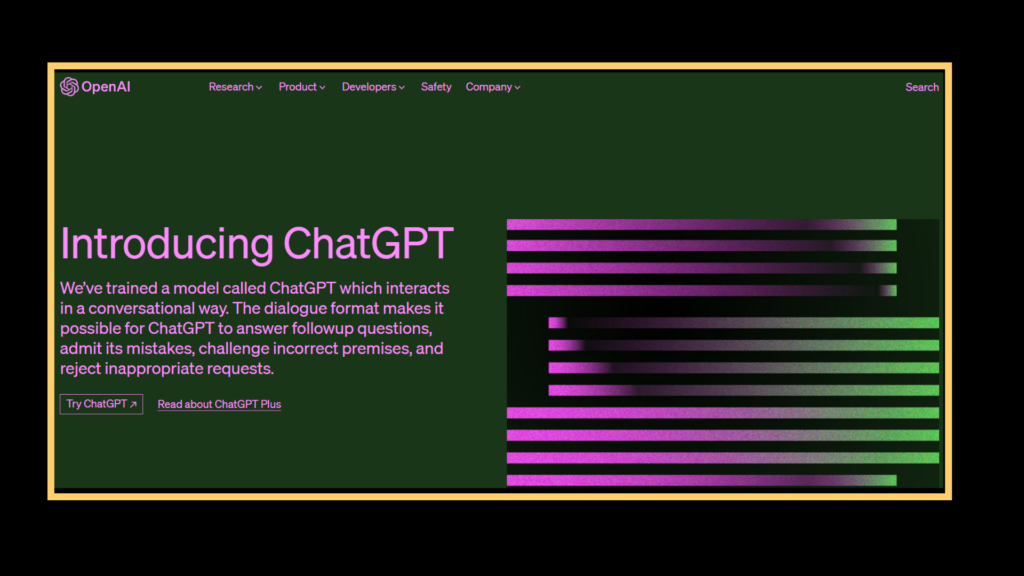
ChatGPT is an AI-powered writing tool that can help you generate copy ideas and refine your writing based on your specific goals and audience. Portent’s Content Idea Generator or Hubspot’s Blog Topic Generator can also help spark creativity and generate fresh ideas, such as blog post topics or social media captions.
Tools for Analyzing The Strength Of Headlines
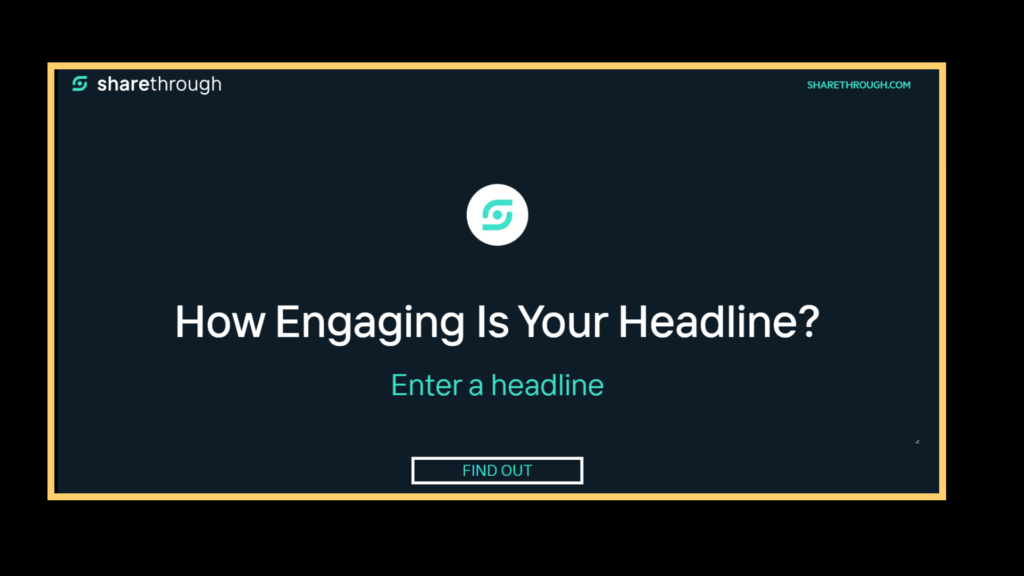
Headline Analyzer by Sharethrough can help you analyze the strength of your headlines and refine them for maximum impact. These tools can provide insights into your headlines’ emotional appeal, word choice, and overall effectiveness.
Tools for Copy Proofreading
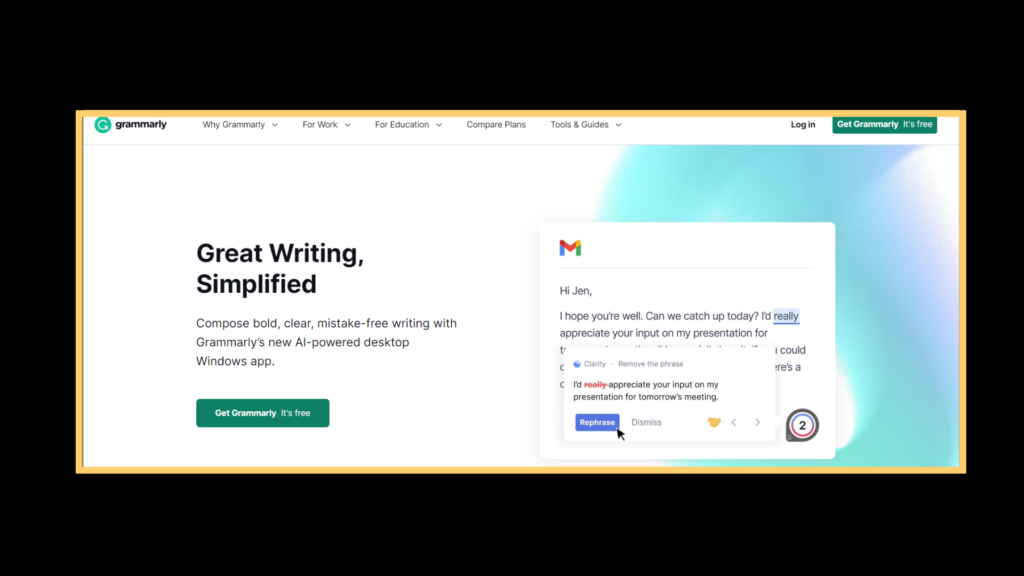
Grammarly or Hemingway Editor can help you proofread your copy and identify grammar errors, spelling mistakes, or awkward phrasing. These tools can ensure your website copy is clear, concise, and professional.
Tools for Promoting Your Website Copywriting on Social Media
Promoting website copy is a crucial step in ensuring that the target audience sees it.
Social media platforms provide a powerful and cost-effective way to promote a website copy to a vast audience.
With billions of active users, social media enables businesses to increase brand awareness, drive traffic, and engage with their target audience.
Effective copywriting for social media can make or break a social media campaign, which is why it’s essential to use formulas like PAS (Problem-Agitate-Solve), AIDA (Attention-Interest-Desire-Action), or the 4 Ps (Problem-Promise-Proof-Proposal) to create compelling and engaging content.
When promoting website copy on social media, it’s crucial to consider the distribution aspect.
With multiple social media platforms available for marketing, it can be challenging to individually publish posts to promote the website on each platform.
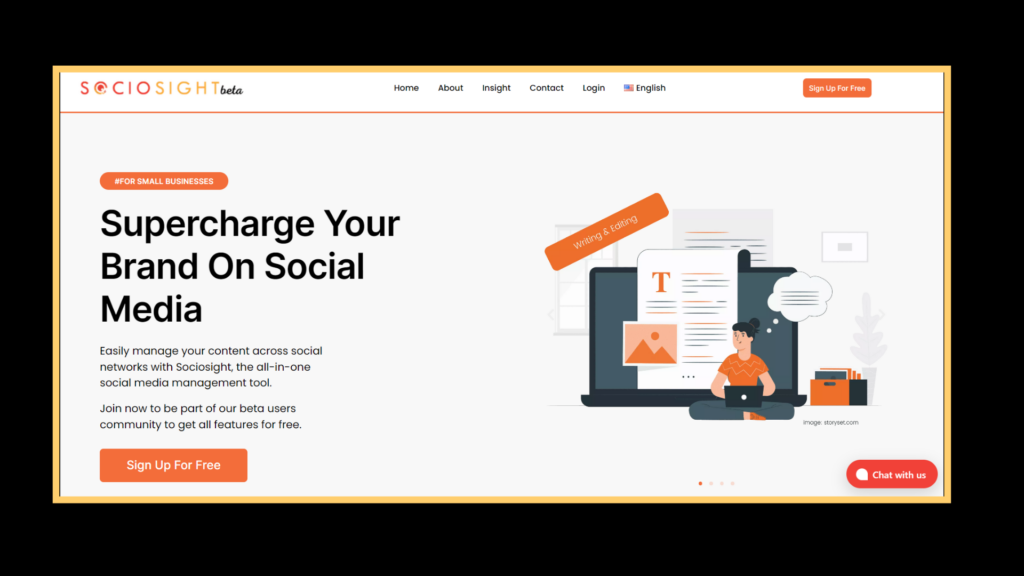
This is where social media management tools such as Hootsuite, Buffer, or Sociosight come in handy. These tools allow you to manage and schedule social media content across multiple platforms, track engagement metrics, and streamline the social media marketing process. You can save time, increase efficiency, and reach a wider audience with your website copy.
If you’re starting with social media and need a free tool to schedule your content on up to 12 profiles, try Sociosight, the social media management app.
Sociosight is a social media content management app that allows you to schedule and publish your website copy across various social media platforms, including Facebook, Instagram, Twitter, YouTube, Pinterest, LinkedIn, and TikTok.
With Sociosight, you can easily create and schedule social media posts and engage with your target audience on social media. In addition to scheduling and engagement, Sociosight is now developing analytics features to help you track and analyze your social media performance, such as follower growth, post engagement, and audience demographics.
Conclusion
In conclusion, effective copywriting for websites requires a balanced approach that incorporates the 4 Ps: Promise, Picture, Proof, and Push.
By crafting compelling headlines and hooks, painting vivid pictures through storytelling and emotional appeal, establishing credibility with social proof, and crafting powerful calls-to-action, you can create website copy that engages your audience, builds trust, and drives conversions.
However, refining your copywriting skills is an ongoing process, and several tools can help you improve your website copy, from audience and competitor research to headline analysis and copy proofreading.
By utilizing these tools and continuously improving your copywriting skills, you can create website copy that effectively communicates your value proposition and drives business success.
One way to make the most of your copywriting efforts is through content batching, where you dedicate a set amount of time to creating and planning your website copy in advance. This can help you streamline your content creation process and ensure a consistent and compelling message across your website.
So don’t wait. Start batching your copy today and take your website copywriting to the next level!






